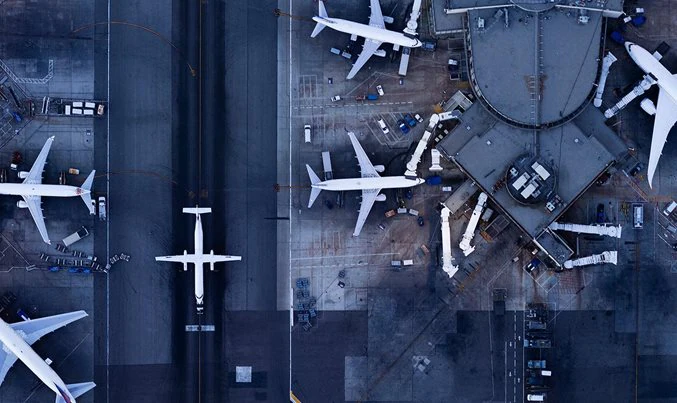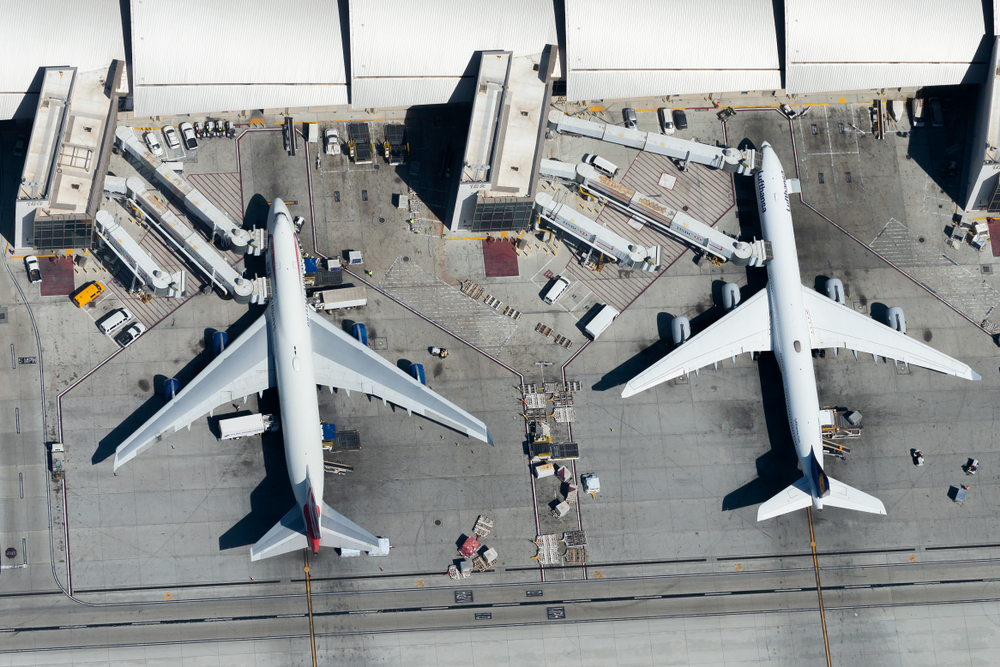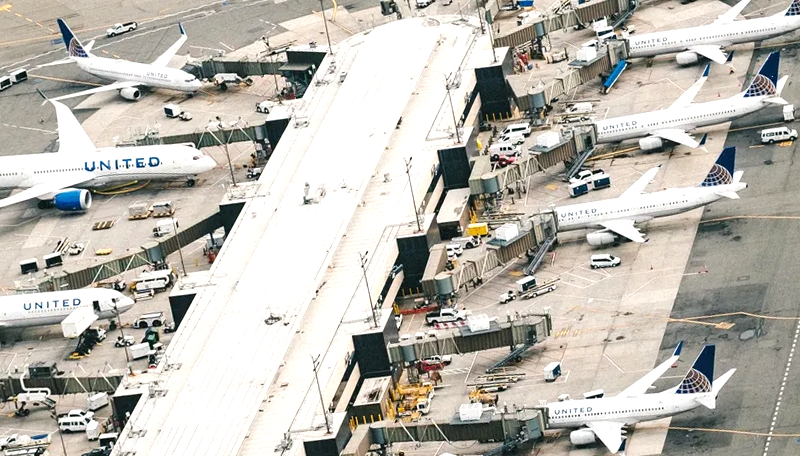The aviation re/insurance market has gone through a turbulent few years, with the impact of the COVID-19 pandemic, geopolitical shocks and macroeconomic challenges; events that have affected the re/insurance industry as a whole and have caused rates for aviation reinsurance to increase at the most recent renewal, according to Gallagher Re Report Aviation reinsurance challenges.
The aviation reinsurance market is facing another set of challenges, which include global and social inflation, coupled with the volatile geopolitical environment.
Current market tensions have arisen following a prolonged soft market and the largest loss in history, driving demand for higher technical rates – set against a global pandemic that has had a devastating impact on the aviation industry and its ability to dramatically increase total market premium (see Promising Outlook for Global Aviation Insurance Market).
The large losses aviation has affected the re/insurance market

Despite the large losses aviation has suffered in the last couple of years and months – which have also affected the re/insurance market – the industry is beginning to show green shoots (see Global Reinsurance Market – a Hardest Market).
Now that the demand for air travel is starting to pick up after the difficult years during the height of the COVID-19 pandemic, it is predicted it will return to almost pre-pandemic levels this year.
The re/insurance market will always be cyclical, and the aviation segment is no exception to this. In recent years we have seen turbulent cycles that have led to some carriers restricting the amount of aviation business they underwrite, or in some cases withdrawing altogether
Head of Aviation, Property & Marine – XL Reinsurance International Re
The aviation re/insurance market went through a soft market period which was the result of severe corrections in the early 2000s, following the tragic events of September 11, 2001, and several other large aviation losses; as well as the introduction of exclusions and tightening of terms and conditions.
Many aviation underwriters also began to introduce pricing tools and use more actuarial resources. Around a decade of low claims activity followed, but during the soft market of the 2010’s there were a series of large losses that occurred at a time when rates were low and terms and conditions broad.
According to Aviation, Marine & Cargo Global Insurance Market Forecasts, the market tensions continue from a prolonged soft market and the largest loss in history, driving de-mand for higher technical rates, set against a global pandemic that has had a devastating impact on the underlying aviation industry and its ability to dramatically in-crease total market premium.
If we take catastrophic losses first, with no further deterioration in the development of the Boeing 737 Max losses experienced since October 2020, we should see avi-ation reinsurers refocus their previous spotlight on the impact of these compared with previous renewal periods.
At the same time, we are seeing increased airline premium fore-casts, with continued improve-ment in expected travel numbers, including those related to the re-opening of the US/UK tourist trav-el corridor on November 8 after a 600-day stop. With rates still rising in other aviation segments, client premium income should be increasing.
As aviation reinsurance continues to recover from large losses caused by a number of challenges in the last few years, the medium-term outlook suggests that the market will remain hard for some time to come
This left many aviation re/insurance underwriters suffering from deteriorating profit margins and lacklustre combined ratios. Then, when windstorms Harvey, Irma and Maria hit in 2017, the reinsurance market sustained large losses.
Surprise reinsurance market reaction
The series of unprecedented losses from 2019 to 2021 prompted very different reactions from different areas of the market.
To put those loss years into perspective, it not only impacted previous market profits for a number of years, it was greater than the total worldwide insurance premium, and many times larger than the aviation reinsurance and retrocession premium income.
The aviation reinsurance market introduced large rate increases. Retentions were reviewed, minimum-rates- on-line re-examined, and coverage restrictions introduced.
This move was already underway before the largest renewals took place, and clients and brokers were given the warning by reinsurers that this is not likely to be just a short-term reaction.
It’s likely that for the medium-term at least, a hard market for aviation reinsurance will persist. In the insurance segment, however, the reaction was somewhat mixed. While some insurance underwriters clearly agree with their reinsurance counterparts that a correction is needed, others have pointed to their ‘risks-attaching’ reinsurance programmes and decided that there is no immediate need for change as they still benefit from historic terms and conditions.
The aviation insurance market currently has ample capacity, with some established players seeking to grow their market share, in anticipation perhaps of increasing rates in the near future, and some newer capacity with fresh appetite also looking to build market share.
Most cedents did seem to indicate that a primary rate increase will happen over the course of 2023, but this is of course more difficult to achieve when capacity is plentiful.
Many reinsurers withdrew from aviation entirely

Following these events, and after looking at which lines of business were not returning sufficient profits, many companies withdrew from aviation entirely at that time.
There are still a number of challenges for the airline industry, including inflation, rising fuel costs, labour shortages and supply-chain crunches; as well as the challenge and opportunity that is the transition to lower carbon, more sustainable fuel sources and the drive towards net-zero.
The series of unprecedented losses from 2019 to 2021 prompted very different reactions from different areas of the market.
The aviation reinsurance market introduced large rate increases. Retentions were reviewed, minimum- rates-on-line re-examined, and coverage restrictions introduced.
This move was already underway before the largest renewals took place, with reinsurers warning clients and brokers that this would probably not be just a short-term reaction.
It’s likely that for the medium-term at least, a hard market for aviation reinsurance will persist. In the insurance segment the reaction was somewhat mixed.
Proportional reinsurance coverage

The question of pricing adequacy is inevitably answered differently by different market players. If you are talking to reinsurers such as Swiss Re and Hannover Re, which offer comprehensive proportion-al and non-proportional across all aviation segments, their view will likely differ from that of a non-proportional specialist, such as Lancashire or Atrium.
Proportional contracts should be showing a continuing positive impact from reduced flights, with a decrease in attritional loss to-tal, as well as a dramatically bet-ter large loss figure than in 2022.
In addition, total premium will be up. This means reinsurers should continue to of-fer attractive ceding commission levels to key clients as results and near-term exposure outlook will be favourable and will allow some advantage with maintain-ing shares on the accompanying excess of loss layers.
As regards non-proportional covers, markets may desire more premium but they will be under pressure to take less of any pure premium lift and less of any in-come coming from increased ex-posure, especially with the larger clients.
Increased rates may be easier to achieve for reinsurers
Maintaining increased rates may be easier to achieve for reinsurers when it comes to small-er clients but with actual large loss level exposure still being sup-pressed by the sustained effects of the pandemic on passenger traf-fic, we would be surprised if not all clients were pushing back hard against this argument.
These discussions will also be set against a backdrop of some uncertainty as to what rates or share of market income reinsurers will be technically targeting when full flight levels return later in 2022/2023, as well as what price increases insurers could realisti-cally apply to clients that are still in a battle for economic survival.
David Bell – Head of aviation Gallagher Re
In addition, with most reinsurers experiencing a truly challenging 2021, the expectation of specialty managers might still be for avia-tion rates to continue increasing. If the reality is less than anticipat-ed, will we then see a resulting re-duction in appetite?
Whatever happens, we expect increased capacity to come in to the non-proportional side, with IQUW being the most notable in ambition and new resource but with others also eager to try to build their book. This will natu-rally offset any reduction in exist-ing capacity and if new capacity is unbiased by legacy losses and payback desire, it will be good news for buyers.
Underwriters clearly agree with reinsurers

While some insurance underwriters clearly agree with their reinsurance counterparts that a correction is needed, others have pointed to their ‘risks-attaching’ reinsurance programmes and decided that there is no immediate need for change as they still benefit from historic terms and conditions.
The aviation insurance market currently has ample capacity, and although most cedents seem to indicate that a primary rate increase will happen over the course of 2023, this is of course more difficult to achieve when capacity is plentiful.
David Bell – Head of aviation Gallagher Re
This capacity comes from some established players seeking to grow their market share, probably in anticipation of increasing rates in the near future, and some newer capacity with fresh appetite also looking to build market share, he added.
Insurers and reinsurers must do their own analysis as to whether they believe the rates they can achieve are adequate, and check the health of the market for major risks. They need to try to assess whether the market premium income for 2023 will return to somewhere near pre-coronavirus levels, and whether exposures are at a similar level too.
New challenges for Reinsurers
Against the challenge of seeking higher technical rates after a long soft market and the largest loss in history, coupled with a pandemic that has radically impacted the prospect of any dramatic increase in market premium total, what other challenges are on the hori-zon to navigate?
Increasing non-major fatality awards in North America
Thistrend has been experienced in many liability classes over the past few years (and noticeably in aviation), when extreme cases go to full jury outcome trials.
The latest to make the headlines was only last month when a Houston jury awarded $352m to the fami-ly of an airport worker paralysed when a van struck him from be-hind on the airport tarmac.
Al-though unlikely to be of major impact to many programmes, the inability to model both occur-rence and outcome will continue to be a concern while aviation coverage extends to comprehen-sive liability exposure.
Reinsurance product differentiation
As insurers begin to consider greater flexibility in terms of rating and charging premium in response to challenges from their clients and the impact of the pandem-ic, can reinsurers respond and increase their differentiation to their clients beyond the mini-mum deposit premium within the excess-of-loss product?
There have been previous market at-tempts with risk-scoring systems but there must be an attraction to some reinsurers to drive a new product offering.
Passenger exposure in space
We are getting ever closer to small but potentially hugely expensive human payloads operating on a fare basis, such as Virgin Galactic.
Space law is evolving fast to try to deal with this new commercial area of risk beyond government employees and what was there-fore in the past a controlled, de-fined liability.
If aviation insurers take up the space tourist coverage challenge then they will naturally expect reinsurers to follow.
Climate change-driven technology
The environmental chal-lenges levelled at the aerospace sector will ultimately become challenges that insurers and their reinsurers need to devise solutions for.
Pressure to mi-nimise climate change impact will require new technology in manufacturing, components and the engine/fuel used, which will mean not only new risk eval-uation, but the inevitability of industry winners and losers al-tering the insurance client base, as well as the potential opportu-nity of new or extended coverage requirements.
Outlook for Global Aviation Re/Insurance
Market players must do their own analysis as to whether they believe the rates they can achieve are adequate and check the health of the market for major risks. They need to try to assess whether the market premium income for 2023 will return to somewhere near pre-coronavirus levels, and whether exposures are at a similar level too.
General costs are on the increase as inflation bites, and reinsurance rates are likely to continue to increase or remain at today’s levels for some time to come.
Buyers of aviation reinsurance should consider the reinsurer position when it comes to adjustable rates even if direct market premium is not growing at the same pace as the rates-on-line. Nor should a tougher stance on minimum premiums come as a surprise.
One potential reaction of the excess-of-loss market to current conditions could be to change the basis of coverage to losses-occurring; this would then negate some of the argument for delaying rate increases.
We are already seeing a clear reduction in appetite for proportional business. This typically is a sign of scepticism about future profitability and might be driven by rate adequacy or structural issues like unlimited event definitions.
Head of Aviation, Property & Marine – XL Reinsurance International Re
Reinsurers should not have to act as the market police and do not want to be seen as the voice of doom. But it is necessary for a sustainable product to be able to demonstrate that there’s a chance of a healthy return on the capital investors have loaned us, and aviation requires rather a lot of said capital given the large exposures and limits in our market.
Risk managers do understand that position and will no doubt agree that the product this market offers is still of very high value, even when they have to pay slightly more than they perhaps did in the past.
There were not many other things outside the insurance and reinsurance market which got cheaper in 2022: other than primary airline insurance.
We believe that a sustainable market with stable capacity is a healthy market and we hope that the technical analysis of the professional market players will continue and underwriting discipline will return, even if there is more than enough capacity.
Over history the reinsurance market has not always been the most disciplined and time will tell whether the current market cycle will result in a return to healthy growth. But we believe that learning from the lessons of the past and thinking about the changing risk outlook of the future will mean that the aviation (re)insurance market remains in good health for the medium term.
………………..
AUTHORS: André Liebkopf – Head of Aviation, Property & Marine – XL Reinsurance International Re, AXA XL, a division of AXA, David Bell – Head of aviation Gallagher Re








